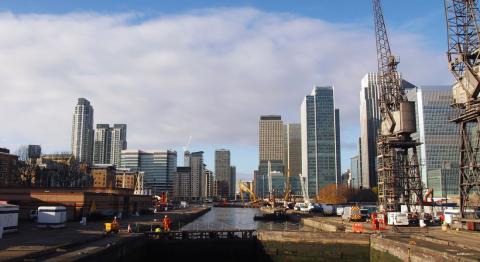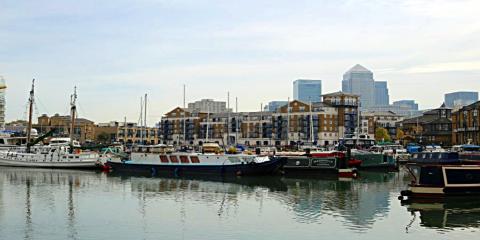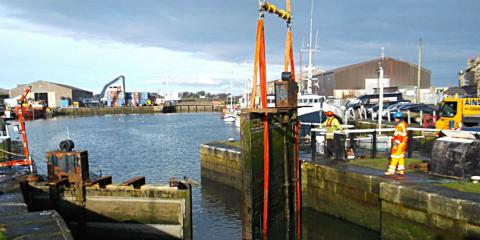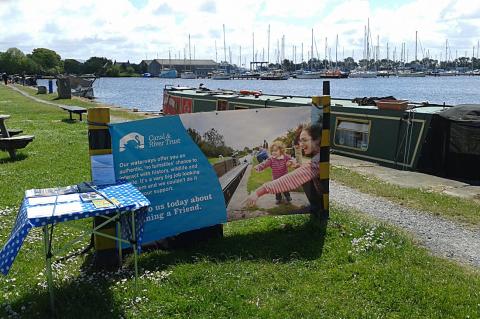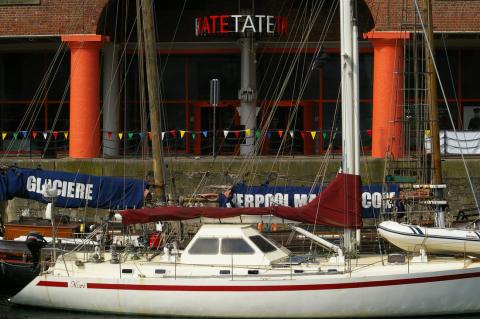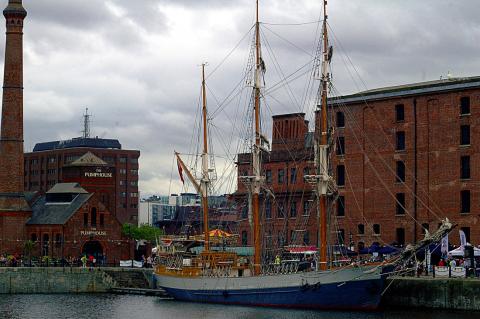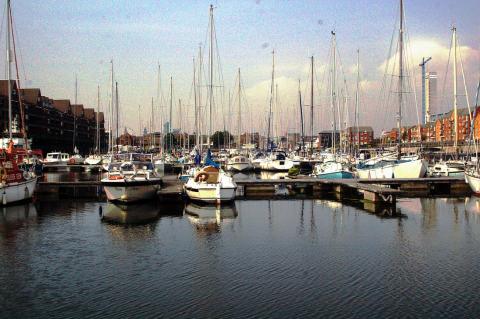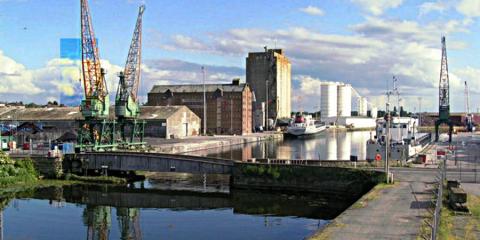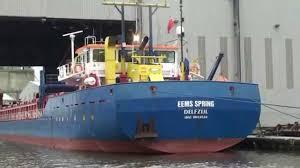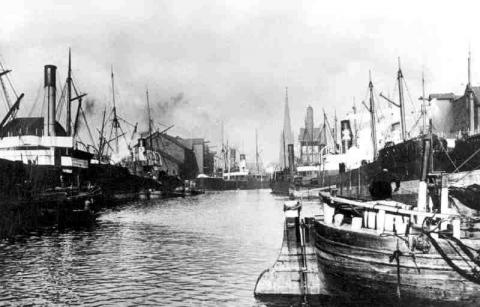Should it be the Canal, Docks & River Trust?
July 2017 - Canal & River Trust tells us at every opportunity that it owns 2,000 miles of waterways – but there's more, lots more, as Peter Underwood has been learning.
A combination of history and governmental convenience means that some of the country's famous, historic docks and ports are a key part of the Canal and River Trust's operations, and they play a financial role in keeping the charity afloat.
Before British Waterways was the British Transport Commission, created by Clement Attlee's Labour government and one of the largest industrial organisations in the world, responsible for five Executives, one of them covering Docks & Inland Waterways
In 1962 it was broken up by Harold MacMillan's Tory Government and replaced by successor bodies including the British Transport Docks Board - later flogged by Margaret Thatcher to become Associated British Ports - and the British Waterways Board, which metamorphosed into BW before being hived off into the charity sector by David Cameron as Canal & River Trust.
Around 30 ports and docks went to the Docks Board but some docks had been seen as part of of the inland waterways for many years and came along with the canals and rivers into the BW organisation, including Limehouse in London, Glasson on the Lancaster Canal, part of Goole docks on the Humber estuary and Sharpness on the Severn. Most of these also had associated land and buildings which have become part of C&RT's property empire.
Others have been transferred since – the old West India Docks that are now home to the Canary Wharf Development, were handed over to British Waterways by the London Docklands Development Corporation in the late 1990's and Liverpool's southern docks by English Partnerships after the redevelopment of the Albert Dock and those to the south of it.
Both came with 'endowments' to pay for future maintenance and upkeep. Developers love building around water but they haven't a clue how to manage and care for it one the buildings are complete.
There is no one person responsible for docks within C&RT, which treats them as part of the waterways infrastructure, if on a much larger scale, when it comes to maintenance and repairs. Yet anyone who spends time on a boat in the Trust's docks will know they are different to the inland infrastructure in tradition and approach – here the nautical rules apply and the sea is unforgiving of any mistakes.
You have to go to the top of C&RT's management to find someone with an overview and The Floater spoke to C&RT's highest paid employee, property director Stuart Mills, who trousered £207,887 in pay and allowances in 2016 - more than Chief Executive Richard Parry. Stuart joined British Waterways in 1990 and became property director 11 years ago.
He told us: “Whoever was operating the docks got them in 1962. We operated several docks like Goole, Sharpness and Glasson at the time of the Transport Act.
“The ones that came to us after the British Transport Commission was split up came as they were. We do own land around Glasson and that's leased out to British Waterways Marinas Ltd and at Goole, we own land leased out to Associated British Ports.
“At Sharpness we own about 200 acres and the dock is less than a third of that. Some of that land is leased out to different operations and we have just got an allocation in the local plan for residential development on a plot of land, away from the dock itself.
“Limehouse came to us from British Transport Commission days as it is the terminus of the Regents. We owned a significant amount of land around Limehouse basin that has subsequently been developed for residential. We secured quite a lot of money for that when we sold the land 20 years ago.
“That money has been reinvested in other property to secure the income stream. We invest our capital in places where it earns good strong income streams. We have been very successful over the last 10-15 years.”
The West India dock complex and Liverpool were not historically part of the Inland Waterways and came to BW then C&RT after the land around them was commercially developed so an 'endowment' was needed to pay for their continuing upkeep as functioning docks.
Stuart explained: “In both those cases we organised a dowry. In Docklands for example we received a cash and property dowry. The money was invested in other property to create an income stream and the property part of the endowment we have subsequently traded and reinvested in other property which gave a better return.
“Lots of people connect Wood Wharf with Docklands but actually Wood Wharf was a completely separate thing. It was a straight commercial property investment we made in the early 2000s and we now have a very long lease on that out to Canary Wharf Group who pay us a very significant amount of money.
“In Docklands we actually received something called West Ferry Printers, the big old print works on the South of the Isle of Dogs and we subsequently got planning permission for residential development and we sold it and reinvested that money elsewhere.
“In all these cases the arrangements allow us to take the assets we receive and do with them what we think best.
“Liverpool was just a cash endowment, we didn't get any assets.”
Stuart says the endowment cash and assets, are not specifically earmarked for the upkeep of those docks.
“We do ensure when we do the original transaction that the income is sufficient to ensure the upkeep of the assets. For example, we might have said we need to invest in low risk so we will assume a three per cent return and if we better that it provides more money for the organisation as a whole.”
There is also income from the waterspace in many docks, rent from marinas, income from C&RT moorings in the dock space and even access payments from the owners of buildings alongside the docks.
Stuart says C&RT doesn't cost it's dock operations separately from the rest of the waterways. “At the time of the dock transfer we would have had a long term view of the assets but we have made a very, very significant amounts of money out of Docklands , far more than we ever anticipated and we haven't really, other than ongoing operations spent a huge amount in repair costs.
“We have done a lot of preventative maintenance type work, so there has been no major asset repairs to cause us to be concerned.
“Actually, many of the structures are bigger, but they are not hugely different from what we own on the waterway system. We are familiar with how to operate locks and repairing those sorts of structures so it is not something that gives us sleepless nights.”
Meanwhile there is still potential in some of the docks as commercial ports. Glasson had grain shipments until recently and Sharpness is a reasonably busy port, under its commercial lessees.
Goole is busy but not on the river side of the docks operated by ABP but quiet on navigation side, linked to the Aire and Calder. Stuart said: “|That is something we are trying to put right. We have interest in bulk aggregates coming back onto the Aire and Calder which is still pretty much fit for purpose for bulk materials.”
Many boaters rarely see the docks owned by C&RT, most are at the ends of canals with nowhere else to go other than an estuary and the sea. Not only are they fascinating places in themselves, and sometimes major tourist attractions like Albert Dock in Liverpool, but they are key heritage responsibilities for C&RT as well as nice little earners for the Trust's coffers.
Photos: (1st) London's Docklands has been a nice little earner for C&RT, (2nd) Limehouse Basin has been an Inland Waterways dock since nationalisation, (3rd) The commercial docks at Glasson, (4th) Glasson's inner basin is leased to BWML Marinas, (5th) Liverpool's Albert Dock, (6th) Tall ships in Liverpool Docks, (7th) A marina leases to two southernmost docks in Liverpool from C&RT, (8th) The Liverpool link - but C&RT doesn't own the docks it passes through north of Pierhead, (9th) Sharpness Docks are leased to a commercial operator but C&RT owns the land around, (10th) Commercial traffic in the Associated British Ports part of Goole Docks, (11th) Goole docks in busier times.






